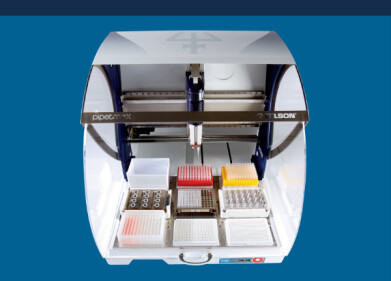Laboratory Products
Are Blood Transfusion Departments Protected from COVID-19?
Feb 19 2021
Since COVID-19 was declared a global pandemic by the World Health Organisation (WHO) in March 2020, it has claimed the lives of almost 2.5 million people. Healthcare workers on the frontline are especially at risk due to constant exposure to infected patients. A new study co-funded by several universities and foundations in China has revealed blood transfusion department employees are also a high risk group.
Risks high for blood transfusion personnel
Laboratory personnel who work in these departments come into contact with the highly infectious severe acute respiratory syndrome coronavirus when performing pretransfusion testing and infectious disease screening. The study concluded that without sufficient biosafety protection the risk of contracting SARSâ€CoVâ€2 is high. During the report, the team not only analysed current laboratory biosafety protection practices in transfusion departments, but also explored ways to improve outcomes and enhance employee safety.
Lack of knowledge and training a major concern
Using results from an online survey involving more than 650 blood transfusion department personnel, almost 5% of participants admitted to not receiving any training regarding COVID-19. While most employees were concerned with contracting the virus, several had insufficient knowledge about the risks and therefore lacked the insight to take adequate safety precautions. Two participants revealed they had come into contact with laboratory personnel infected with SARSâ€CoVâ€2.
“Some personnel did not have adequate knowledge of laboratory biosafety protection and were unqualified to work in a laboratory during the COVIDâ€19 pandemic because they did not receive security and safety training,” reads the conclusion.
Laboratories lacking personal protective equipment
The team identified several major challenges faced by blood transfusion departments, including ineffective laboratory safety practices and high-risk laboratory conditions. Lack of safety training was one of the biggest deficiencies, with insufficient security protocols also identified as a risk factor. Failure to provide employees with personal protective equipment was another major concern. Another significant risk to laboratory personal was the absence of safety-enhancing equipment and facilities, such as automatic cap removal centrifuge and Bio Safety Cabinets (BSCs).
As COVID-19 continues to threaten the lives of healthcare workers around the world, enhancing safety protocols has never been more important. Bio Safety cabinets are particularly important, as they allow scientists to safely work with high-risk materials contaminated with pathogens. In ‘Decontamination Methods for Bio Safety Cabinets’ experts from Azbil Telstar Technologies S.L.U. discuss the best-practice techniques used to sanitise BSCs and ensure all traces of hazardous biological material are destroyed.
Digital Edition
ILM 49.5 July
July 2024
Chromatography Articles - Understanding PFAS: Analysis and Implications Mass Spectrometry & Spectroscopy Articles - MS detection of Alzheimer’s blood-based biomarkers LIMS - Essent...
View all digital editions
Events
ACS National Meeting - Fall 2024
Aug 18 2024 Denver, CO, USA
Aug 25 2024 Copenhagen, Denmark
Aug 28 2024 Phnom Penh, Cambodia
Sep 04 2024 Chiba, Tokyo, Japan
Sep 04 2024 University of Warwick, Coventry, UK











24_06.jpg)






